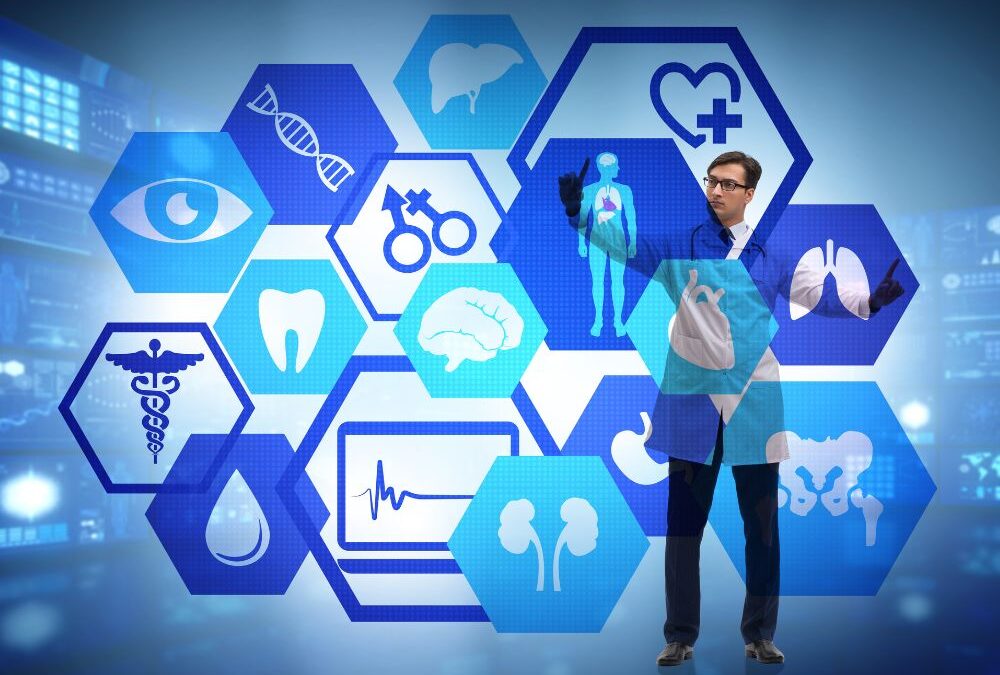Assuming that telemedicine is merely a video chat between doctor and patient is to oversimplify what has become a high-tech healthcare solution. Telemedicine has come a long way in the last decade. It far exceeds remote visits with one’s doctor – these days, there are multiple types of telemedicine to fit a wide variety of needs.
CSI Health designs and builds innovative healthcare telemedicine solutions. We utilize the latest computer hardware, specialized software, and diagnostic tools built right into our kiosks and mobile units. They are designed primarily for what is known as synchronous telemedicine.
Synchronous telemedicine is one of four types of telemedicine now being practiced worldwide. Below is a description of each type, along with the advantages it brings to the table.
1. Synchronous Telemedicine
Synchronous telemedicine is a type of telemedicine involving direct contact between patient and clinician. What most people think – video calls with their doctors – is a classic example of the synchronous model. Video, text chat, and real-time data transfer are hallmarks of synchronous telemedicine.
Its advantages include efficiency and convenience. Telemedicine is more efficient from the doctor’s perspective because more patients can be seen in the same amount of time otherwise devoted to in-person visits. It is convenient for patients because they do not have to travel to and from the doctor’s office. They save time in the process.
2. Asynchronous Telemedicine
Asynchronous telemedicine is still patient-facing, although it has little to do with direct consultations between doctor and patient. An asynchronous model is more about storing patient records so that they can be retrieved later by providers in other locations. Asynchronous telemedicine is often referred to as ‘store-and-forward’ telemedicine.
The main advantage here is the ability to remotely access patient records and other information. Data is stored in the cloud rather than on local computers. As such, any healthcare provider a patient seeks out has immediate access to the patient’s records. Records do not have to be manually transferred.
3. Remote Patient Monitoring
Next up is remote patient monitoring (RPM). This form of telemedicine is just as its name suggests: using technology to remotely monitor a patient’s health. This can be accomplished mainly through wearables.
RPM is advantageous to both clinicians and patients in the sense that both stay on the same page without the patient having to visit the doctor’s office on a regular basis. Remote monitoring keeps the doctor informed at all times. When necessary, the doctor can reach out with advice or questions.
4. Mobile Healthcare
Fourth on the list is mobile healthcare. Known as mHealth in some circles, mobile healthcare is a model that involves offering certain types of healthcare services via mobile apps. Primary care that doesn’t require lab tests is at the top of the list. Mental health evaluations and consultations are also gaining traction in the mobile health environment.
Mobile health’s big advantage is being able to access healthcare services via the same on-demand model that now dominates so much of the e-commerce world. Patients who need to quickly consult with a doctor over what appear to be nothing more than minor symptoms can simply bring up an app and initiate a virtual visit.
In terms of mental health, mobile apps are proving pretty popular. Patients are more than comfortable seeing their psychiatrists or therapists remotely. With a mobile app, remote visits are more convenient and easier to facilitate.
Telemedicine has come a long way over the last decade. So much so that each of the four different types of telemedicine offer something different. We are looking forward to seeing how it all develops and further matures in the years to come. We’re confident that telemedicine’s future looks bright.


Recent Comments